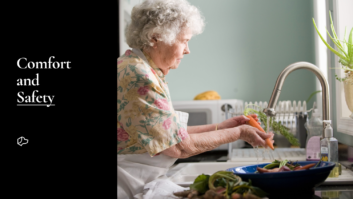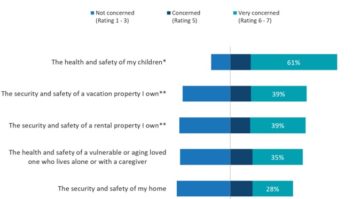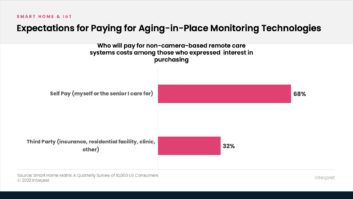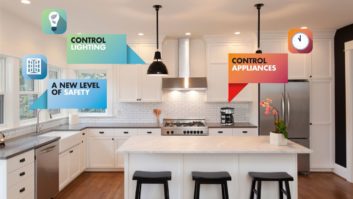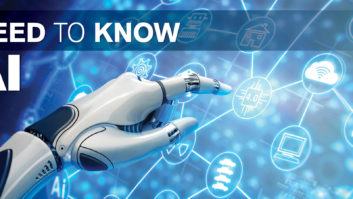The world population is getting older, and that’s a good thing for a few obvious reasons, such as having people in our lives longer and increasing our own time on the planet.
Consider this passage from the U.S. Census Bureau:
The year 2030 marks an important demographic turning point in U.S. history, according to the U.S. Census Bureau’s 2017 National Population Projections. By 2030, all baby boomers will be older than age 65. This will expand the size of the older population so that 1 in every 5 residents will be retirement age.
“The aging of baby boomers means that within just a couple decades, older people are projected to outnumber children for the first time in U.S. history,” says Jonathan Vespa, a demographer with the U.S. Census Bureau. “By 2035, there will be 78 million people 65 years and older, compared to 76.7 million (previously 76.4 million) under the age of 18.”
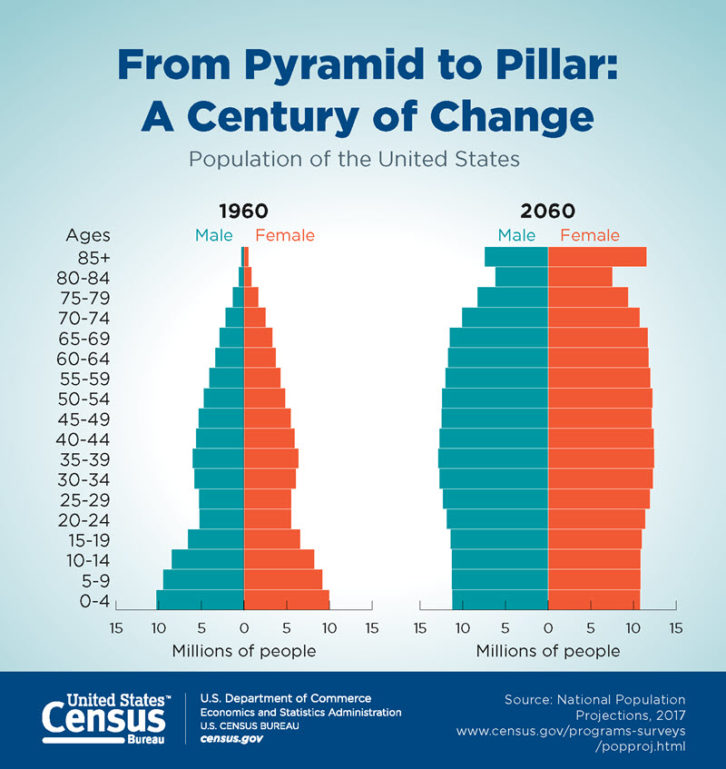
And it isn’t just in the United States. Consider this from the “2015 United Nations World Population Ageing Report”:
Between 2015 and 2030, the number of people in the world aged 60 years or over is projected to grow by 56 percent, from 901 million to 1.4 billion, and by 2050, the global population of older persons is projected to more than double its size in 2015, reaching nearly 2.1 billion.
The upcoming wave of seniors brings its own set of buzzwords, including the “silver tsunami.” It’s also spawning offshoots such as the “sandwich generation,” directed toward the middle-aged generation who still have children at home and now must also care for their elderly parents.
As it always has, where there is a need, technology rises to the occasion, and the silver tsunami is no exception. With seniors preferring to stay in their homes for as long as possible, smart home technologies are key to helping them live in comfort, keeping them safe, and alerting caregivers to any drastic changes in their condition. To that end, we have seen a number of aging-in-place products enter the market, many of which use AI with machine learning to monitor the senior’s habits and alert doctors, children, and caregivers of their vitals and changes in behavior.
The benefit of using these tools is not lost on the older generation, who are typically slow to adapt to new technologies. At CES this past January, the CTA held a conference track called Disruptive Innovations in Health Care, including a session called “What’s Hot in Health at CES 2019,” and, according to their research, seniors are open to using technology to manage their health, with 54 percent in agreement. The study also showed that seniors are familiar with some healthcare technology, with 32 percent being “very familiar” with emergency response solutions.
Need to Know: Cybersecurity for Residential Integrators
Also revealed at the session was the CTA’s research into remote patient monitoring (RPM). The study found that 40 percent of consumers and 65 percent of healthcare professionals are aware of remote monitoring. For consumers, the main reason (51 percent) to use health technology is to better understand their own/family member conditions and workings of medications taken. Forty-nine percent of healthcare providers believe the technology has made health and fitness more accessible to their patients, and that these same patients are happy to share this data with their doctors.
Of course, as with any connected technology, security remains an issue, with 43 percent of primary care physicians and 24 percent of endocrinologists worried about how the patient-generated data is handled. On the consumer side, 43 percent are generally concerned about data privacy.
Even with concerns, there is still a great willingness to use health technology in the future, with 49 percent of consumers interested in using it to manage their health and 68 percent of health professionals wanting to use it to manage their patients’ health, CTA’s research showed.
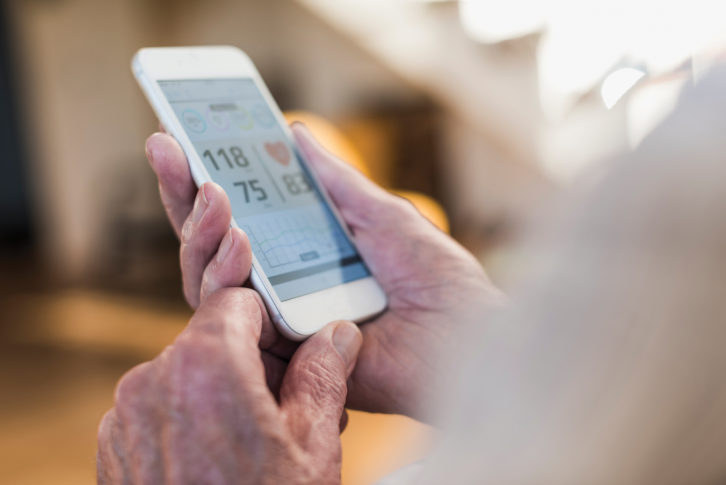
Smart Home Versatility
The smart home is already prepared to make life easier as mobility and memory decreases. In fact, smart homes have for years been used to make life better for people with disabilities, and these same principles apply to aging in place.
“A cohesive smart home system unifies all of the technology in the home — the lights, thermostat, TV, security, and more — into a daily schedule or easier control methods,” says Brad Hintze, senior director of product marketing, Control4. “Seniors who may not be comfortable with some technology can still easily access and control their smart home devices because Control4 integrates with devices these individuals are already familiar with, like a handheld remote or a wall switches, plus other convenient methods such as voice control, a touchscreen, or a mobile app.”
We reached out to several control system manufacturers, including Control4, Crestron, ELAN, and Savant, among others, and all confirmed they had integrators using their systems to keep seniors comfortable in their homes.
“As seniors enter into the Golden Years, they may begin to feel like they are starting to lose their independence as their mobility or memory fades,” Hintze continues. “Whole-home technology offers a way for seniors to stay comfortable, and thrive in their home as they age. Smart home technology simplifies home management and makes aging in place easier and more secure for seniors and their families.
“In Control4’s case, its intuitive platform is easy for anyone to use and gives seniors control of their home with the control method(s) of their choice. It also allows their loved ones to access and manage the system or see the status of important devices like thermostats or door locks, and even check in with their loved ones through a touchscreen or mobile app, to better help them maintain their independence and overall quality of life.”
With the control systems key to its success across the whole gamut of options — from control of the house’s systems to monitoring of the home’s occupants — aging-in-place technology seems to fit firmly in the wheelhouse of the custom installer. The stakes are too high to leave it to DIY techniques.
“The number of people this technology will impact in life-changing ways is significant, and I don’t believe the installs will be possible without pros,” says Alex Capecelatro, co-founder and CEO for Josh.ai. “Further, the potential for insurance companies and others to subsidize the cost and take the financial burden off the homeowner will lower the barrier to adoption. We’re also seeing a growing willingness in aging demographics to adopt tech-forward solutions and to understand the benefits. I would argue this is going to be an important and large opportunity, but it’s not clear exactly when and exactly who will be the ones to make it happen.”
Need To Know: AI and Residential Integration
New Tools on the Horizon
In addition to the smart home tools we all know and love, there are a number of companies that may not be familiar to residential integrators, but are working in this area. Here are a few examples:
Numera, a wellness tech company owned by Nortek Security & Control (owners of ELAN and a whole host of home AV and security solutions), takes the Medic Alert necklaces of yesteryear to new levels by using precise technology to alert caregivers to a fall — eliminating false alarms — even if the patient has fallen unconscious and can’t activate the button himself.
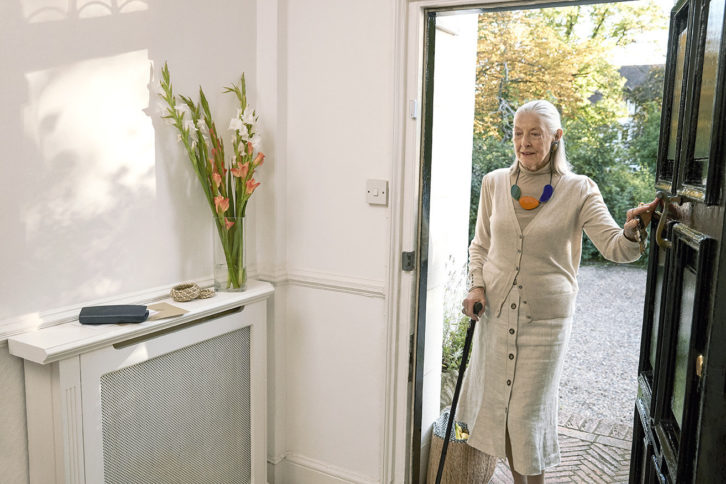
Centrica Hive’s Hive Link is a smart home service designed to allow caregivers to check their loved one is getting on with his or her day as usual, while giving that senior reassurance someone is there if needed. Hive Link is powered by an ever-learning Hive-designed algorithm that continually interprets data captured by Hive smart home devices carefully placed around the home, learning a loved one’s routine. This information is shown through an intuitive activity log within the Hive app, allowing caregivers to check in regularly. If the loved one deviates from a usual routine in the morning or at night, or leaves a front door open, the caregiver is quickly sent a notification, allowing for an immediate and appropriate response, such as a phone call or a visit. Hive Link also features a sharing Circle that lets family and friends share the caring responsibilities.
Pillo is the in-home healthcare companion from Pillo Health. The voice capture technology is inside this gadget, enabling it to accurately record and send voice commands for video communications (with family and caregivers); set reminders; and connect to a healthcare knowledge base. It’s also a secure pill dispenser designed to help with adherence to any medicine plan.
The Essence Care@Home enhanced telecare services platform is an aging-in-place product suite. It lets service providers offer such solutions as emergency alerting and a professional intelligent home care solution that constantly learns and adapts to the daily behavior of individuals, providing alerts with different severity levels based on deviation from the daily routine.
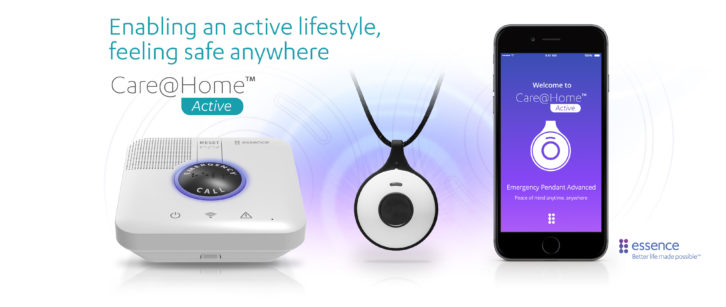
The Right Business?
With the graying of the country not due to fully form for more than a decade, there doesn’t seem to be a rush to adapt aging-in-place technologies as part of a business mix; even without the extreme societal turns, however, it’s clear this is a growing part of the community you serve and warrants some attention.
Our role has always been about enhancing the lives of our customers in their homes, and this seems a worthy extension of that commitment.

